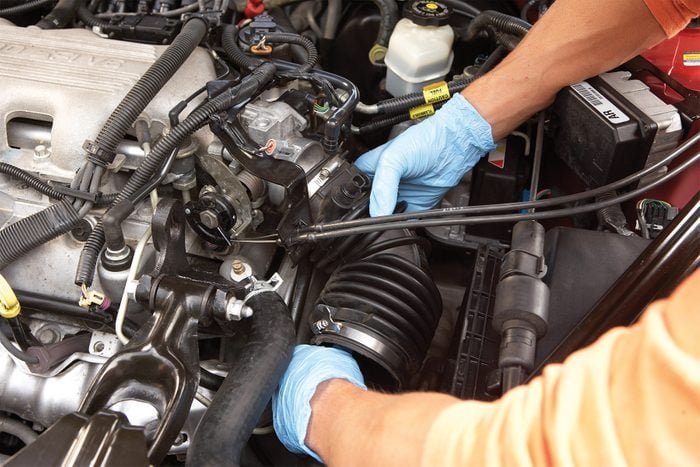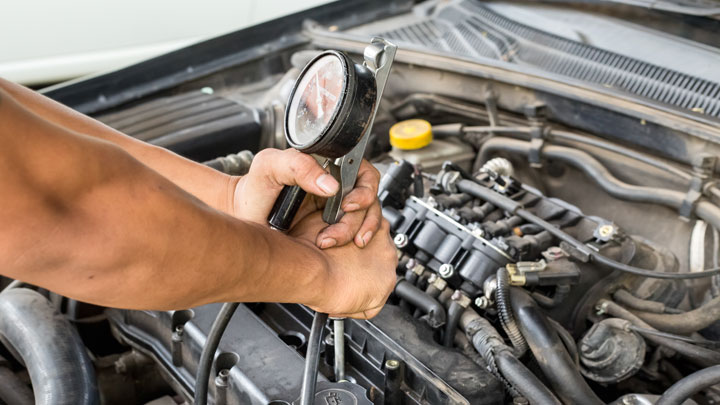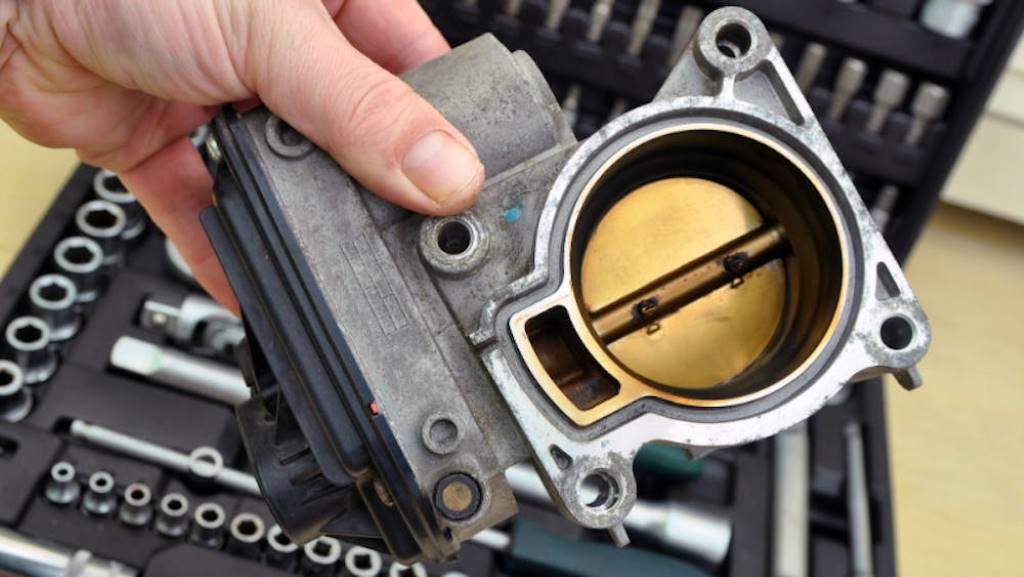How Much You Should Expect On The Clean Throttle Body Cost?
If your car isn’t running quite right, a malfunctioning throttle body could be the culprit. And the cure for this issue can be a simple throttle body cleaning process. So what is the ultimate clean throttle body cost you should look forward to.
What Is A Throttle Body And Why Does It Fail?
Imagine your car’s engine as a fire. The throttle body acts like the air damper, controlling how much oxygen feeds the flames. Located near the air intake, it contains a butterfly valve that opens and closes based on your accelerator pedal.
Imagine pressing down on the gas pedal – this action is relayed to the throttle body, which then opens and closes a butterfly valve.
This valve controls the amount of air that enters the engine. More air allows for more fuel to be burned, creating more power.
The throttle body can succumb to a few enemies over time, such as:
- Grime accumulation
- Wearing down from constant work
- Sensor malfunction
- Vacuum leaks
What Is The Average Cost to Clean Throttle Body?
Getting a clean throttle body service can vary in cost depending on where you live, the complexity of your car, and the mechanic’s rates.
Labor is typically the biggest expense, ranging from $50 to $375 depending on how easy it is to reach the throttle body. Location plays a role too, with urban areas generally costing more.
Even the car itself matters, as some models have trickier-to-access parts that take longer to clean. You might also need a new gasket, which adds around $10 to $20.
Overall, expect to pay anywhere from $75 for a basic cleaning in a low-cost area to $400 for a heavily soiled throttle body cleaner price.
If you’re handy and comfortable working on your car, there are online tutorials that can help you tackle the cleaning yourself, potentially saving you a significant amount of money.

Signs You Need To Clean A Throttle Body
Your car’s engine should run smoothly, like a well-oiled machine (pun intended). But if you’ve noticed some strange behavior lately, it could be a sign that your throttle body needs some TLC.
Stuttering starts and stops
Imagine your car is constantly hiccupping as you come to a stop or start from a red light. This erratic idling, where the engine revs up and down or struggles to maintain a steady RPM, can be caused by a dirty throttle body.
The grime buildup disrupts the airflow, making it difficult for the engine to find the right balance of air and fuel for a smooth idle.
Jumpy acceleration
Does pressing the gas pedal feel like giving your car a jolt instead of a gentle nudge? This hesitation or jerkiness when accelerating can also be a symptom of a dirty throttle body.
The clogged passageways prevent a smooth flow of air, hindering the engine’s ability to respond quickly to your demands for more power.
Fuel efficiency woes
If you’re filling up your tank more often than usual, a dirty throttle body could be the culprit. The disrupted airflow throws off the air-fuel mixture, leading to inefficient combustion.
This means your engine is working harder but burning less fuel, resulting in poorer gas mileage.
Check engine light illuminates
While not a guaranteed sign of a dirty throttle body, the check engine light can sometimes come on due to this issue.
Modern cars rely on sensors to monitor various engine functions, and a malfunctioning throttle body can send confusing signals to the engine computer, triggering the check engine light.
Loss of engine power
In severe cases, a heavily clogged throttle body can significantly restrict airflow, leading to a noticeable loss of engine power. You might feel a sluggishness when trying to accelerate, especially uphill or with a load.
If you’re experiencing one or more of these symptoms, it’s a good idea to have your mechanic inspect the throttle body. They can determine if cleaning will solve the problem or if a replacement is necessary.
Remember, a clean throttle body can lead to a smoother running, more responsive, and potentially more fuel-efficient car.

How Is A Throttle Body Cleaned? Can You DIY?
Cleaning a throttle body can be a budget-friendly way to improve your car’s performance, but it requires some mechanical finesse.
Before diving in, gather your supplies: throttle body cleaner, rags or paper towels, a small brush (like an old toothbrush), a flat-head screwdriver (potentially), and a torque wrench (depending on your car).
Safety first! Work in a well-ventilated area, wear gloves and glasses, and consult your car’s manual for specific instructions.
The throttle body, usually near the air intake system, is like a conductor for air entering the engine. Pressing the gas pedal opens a butterfly valve inside the throttle body, allowing more air in for increased power.
Over time, grime buildup can clog the passageways and hinder the valve’s movement. Here’s how to clean it step-by-step.
Locate the throttle body
It’s typically a cylindrical component with a butterfly valve inside, found near the large hose connecting the air filter to the engine.
Disconnect and remove
Carefully detach any hoses or air intake components that block access, following your car’s manual. You might need the screwdriver to loosen hose clamps. Remember how everything connects for reassembly!
Cleaning Time
Don’t spray cleaner directly into the throttle body! Instead, target the grime buildup in the air duct opening. The cleaner can be harsh, so avoid the butterfly valve and electrical components.
Scrub and wipe
Use the small brush to gently scrub the throttle body’s interior, focusing on grimy areas. Wipe away loosened dirt and cleaner residue with clean rags or paper towels. Repeat until the metal surfaces appear clean
Some cars with electronic throttle bodies might require holding the gas pedal down while cleaning to keep the valve open. Refer to your manual or online tutorials for specific instructions on your car’s make and model.
Putting it back together
Ensure all visible grime is removed before reassembly. A flashlight helps inspect hard-to-reach areas. When reattaching components, be careful not to over-tighten anything, as this can damage parts or create leaks.
Let it rest
After reassembly, allow the throttle body cleaner to dry completely (usually around 5 minutes) before starting the engine.
Should you DIY?
Cleaning a throttle body can be a DIY project, but it’s important to be comfortable working on your car and follow the steps meticulously.
If you’re unsure about any part of the process, consult a professional mechanic. Here’s when it might be best to call in an expert:
- Comfort level: If you’re unfamiliar with your car’s engine or hesitant about working with delicate parts, leave it to the professionals.
- Car’s complexity: Some cars have more intricate throttle body designs or require special tools for cleaning.
- Severity of the problem: A heavily soiled throttle body might require a more intensive cleaning procedure than a simple DIY approach can offer.
A clean throttle body can lead to smoother engine performance and better fuel efficiency. Weigh the pros and cons based on your skills and the car’s condition before deciding to tackle this project yourself.

FAQs on Clean Throttle Body
-
Why should I consider cleaning my throttle body?
Cleaning the throttle body is essential for maintaining optimal engine performance. Over time, carbon deposits can accumulate on the throttle plate and bore, affecting airflow and potentially causing rough idling or hesitation.
-
How often should I clean my throttle body?
The frequency of throttle body cleaning depends on driving conditions and vehicle usage. As a general guideline, consider cleaning it every 30,000 to 50,000 miles or if you notice symptoms like rough idling or reduced engine performance.
-
Can I clean the throttle body myself, or should I have it done professionally?
Cleaning the throttle body can be done as a DIY project for those with mechanical experience. However, professional cleaning ensures thorough removal of deposits and proper reassembly.
It’s recommended to consult a mechanic for precise cleaning, especially for complex throttle body designs.
-
What is the average cost of professional throttle body cleaning?
The cost of throttle body cleaning varies depending on the vehicle make and model, the extent of carbon buildup, and labor rates.
On average, expect to pay between $75 to $150 for throttle body cleaning at a dealership or independent repair shop.
-
Are there additional benefits to cleaning the throttle body?
Besides improving engine performance, cleaning the throttle body can also enhance fuel efficiency and reduce emissions.
A clean throttle body allows for smoother airflow and better combustion, translating to savings at the gas pump and reduced environmental impact.
-
Can throttle body cleaning solve other engine issues?
While throttle body cleaning can address some performance issues caused by carbon buildup, it may not resolve underlying mechanical issues like faulty sensors or worn components.
If you continue to experience drivability problems after cleaning the throttle body, further diagnostics may be necessary.
Check out this video from to learn some notices on cleaning throttle body!
Cleaning and being aware of the clean throttle body cost is a critical aspect of maintaining engine health and performance.
By addressing carbon buildup and ensuring smooth airflow, throttle body cleaning contributes to a smoother driving experience and prolongs the life of engine components.














